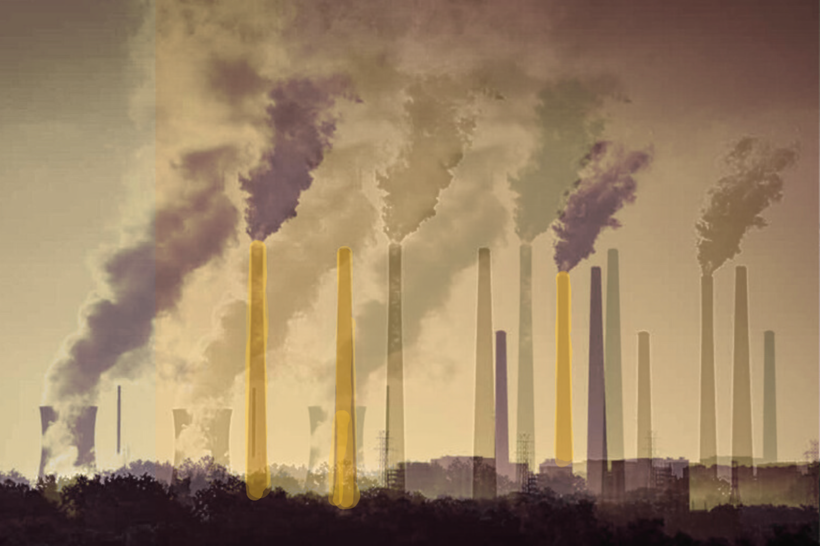As artificial intelligence and other energy-hungry industries have shattered forecasts of US electricity use over the next decade, many states have turned to a familiar solution to beef up their grids: fossil fuel plants.
New York is not one of them. The state’s climate law requires New York to get 70 percent of its electricity from renewables by 2030 and achieve a carbon-free grid by 2040.
But the state is far behind on building new clean energy, and still has to contend with surging electricity demand. That’s leading some to conclude that New York needs to rethink its climate mandates. Could new gas plants be on the table?
One key report says there’s no need to go back to the drawing board just yet. The state has enough power plants
operating or being built to meet demand over the next 10 years,
according to the New York Independent System Operator, the nonprofit
that operates the state’s grid. That finding takes into account new data
centers, cryptocurrency facilities, and other “large loads” seeking to
connect to the grid.
The report, which is still being finalized this month,
suggests that New York’s energy outlook hasn’t changed that much since
AI entered the equation. The main challenge of the state’s energy
transition this decade is catching up on building renewables and the transmission lines needed to move clean power around the state, while shifting more everyday energy use from fossil fuels to electricity.
“That era [of building gas plants] is ideally long over at this point in New York,” said Liz Moran, Northeast policy advocate at the environmental advocacy group Earthjustice. She pointed to the state’s 2021 denial of a permit to Danskammer, a power company that wanted to build a new gas plant on the Hudson River in Newburgh. Regulators argued at the time that the proposed plant would “perpetuate a reliance on fossil fuels” in violation of the state’s climate law.
After a lengthy appeal, Danskammer withdrew its permit application this past summer, in what many advocates saw as the nail in the coffin for new fossil fuel plants in New York.
Asked for comment, state environmental regulators declined to say whether they’ve fully ruled out future gas plants. A spokesperson for the Department of Environmental Conservation said the agency reviews permit applications case by case “to ensure the agency’s decisions are protective of public health and the environment.”
Some in the power industry say it’s too early to count new gas plants out just yet.
“I think that there definitely could be new gas generation in the future,” said Richard Bratton, director of market policy and regulatory affairs at the trade group Independent Power Producers of New York (IPPNY). “They would definitely have to be permitted outside of disadvantaged communities and have access to the large loads. But … it should still be an option.”
State energy regulators are still defining what kinds of non-renewable energy will count as “zero emissions” under the climate law’s 2040 mandate. IPPNY has petitioned for plants that use carbon capture technologies to be included on that list — which could allow for new fossil gas. The group also wants “renewable natural gas” plants, which would burn methane gas captured from farming and landfills, to be allowed.
Governor Kathy Hochul, for her part, has made it clear that she’s watching how demand from big tech is transforming the energy system. But she seems less interested in revisiting gas than in exploring new nuclear power. Alongside the “Future Energy Economy Summit” she hosted in Syracuse in September, her administration released a white paper examining the prospects for future nuclear plants in the state.
“We’re not fracking, we’re not burning coal, we’re not going backwards,” Hochul said at the summit. New York’s challenge is “how we balance an emissions-free energy source — many sources — while launching the economy of the future.”
The governor reportedly also met with US Army officials over the summer to discuss building a small nuclear reactor at Fort Drum, north of Syracuse.
One thing gas and nuclear plants have in common: They would likely take a long time to build. John Wilson, vice president of the energy consultancy Grid Strategies, said gas plants being ordered now probably won’t be up and running for close to a decade. So-called “small modular” nuclear plants — only a few of which currently exist in the world — could take at least as long to gain a foothold.
That means that new around-the-clock generation probably won’t help the state feed its growing electricity need in the short term. In the meantime, there’s a lot the state could do to ease the power crunch by helping already planned renewables and transmission lines get built faster.

